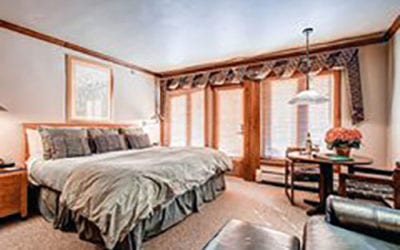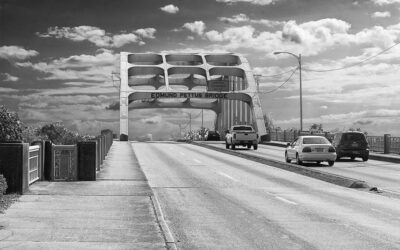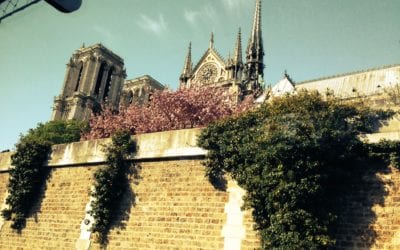 My favorite times in Spain have been on backcountry drives of discovery.
My favorite times in Spain have been on backcountry drives of discovery.
Madrid, Barcelona and Seville are modern, sleek and efficient. The Costa del Sol is packed with beachgoers and high-rises lining endless sand. But only a few kilometers away, around the knoll, down a river, the Old World heart of Spain still beats.
Here are some of my favorite drives to the Spain where time still seems to stand still.
Val de Aran
Hard against the French border, about four-hours from Barcelona, lies the Val de Aran. It is the only east-west valley in the Pyrenees and has survived, tucked between France and Spain as a little Shangri-La. The winding roads through the mountains provide inspiring views and panoramas. Evocative villages perch on hillsides as they did centuries ago and the old section of Viella, the capital, has been restored and is packed with restaurants and tapas bars. The food of the valley is a unique blend of French and Spanish and not to be missed. Rich pastries and sauces compliment mountain lamb and fish.
Val Roncal
Another storied valley in the western Pyrenees is about an hour’s drive east from Pamplona. At the start of the valley visit the early Romanesque Monastery of Leyre with expansive views over the Yesa reservoir. The dramatic narrow road tracing the Esca River leads to the town of Roncal and Isaba famous for their cheeses. Stop for lunch in Isaba and enjoy trucha alla Navarra, pimientos de piquillo and local rose wines. The French border is only a few kilometers further up the valley where Europe’s oldest and still enforced treaty (the Treaty of the Three Cows) was signed and is celebrated every July. The road back to the main highway passes the breathtaking and deep Arbayun and Lumbier Gorges.
 Picos de Europa
Picos de Europa
Twenty miles southwest of Santander stands the Picos de Europa, the highest mountain range on the Spanish Atlantic coast. In this perpetually snowcapped fortress the final Christian enclave withstood Moorish attacks and eventually began the Spanish reconquest. The range is encircled by 150-miles of narrow, twisting two-lane roads that for the most part follow rivers which trace the perimeter of the mountain reserve. Changing shades of rough rocks and pliant vegetation combined with the rivers’ wildly swinging shifts and narrow gorges make for a magical drive. Visit the El Buxu Cave where prehistoric paintings of horses and cattle can be viewed on cavern walls. A recommended two-hour side trip off this road is the drive up the road to Lake Enol, where wild horses still graze, and Calvadogna Cathedral, the starting point of the Christian reconquest. Find a tiny restaurant and order fabada (bean and sausage stew) and enjoy a hunk of cabrales cheese made right in the neighborhood.
 Merida and Caceres
Merida and Caceres
Tucked in the southwest quadrant of Spain, Extremadura is the homeland of the most famous conquistadors and some of Spain’s most extensive Roman ruins. The old-world center of Caceres, the town that grew rich in the days of the conquistadors, is still encircled by its Moorish-built walls and evokes a royal atmosphere. Merida is home to Spain’s best-preserved Roman ruins dating from 25 B.C. The Roman bridge still spans the river, the theater still stages plays throughout the summer, the aqueduct stretches for five miles, and the amphitheater lets imagination run free with visions of gladiators and cheering crowds. Both cities have excellent paradors that allow one to dine and lodge in restored elegance. Try the local specialty, perdiz in salsa, with a hearty local wine.
 Burgos to Seguenza
Burgos to Seguenza
Follow the route El Cid traced when he was banished from his hometown. The one- and two-lane roads twisting from Burgos pass spectacular gorges, golden plateaus, hulking fortresses and ancient towns and monasteries that don’t seem to have changed much since El Cid’s days. Visit San Pedro de Cardena, where El Cid’s wife waited for his return, medieval Covarrubias and the Gregorian chant center of Santa Domingo de Silos. Then drive through the Yecla Gorge, past the massive Moorish fortress of Gormaz and eventually to the restored castle-Parador overlooking Seguenza. Take time to enjoy the wines considered by many to be Spain’s best and try the cordero lechal.
For a car, I call AutoEurope at (800) 223-5555 or use its Web site. It flat-out guarantees the lowest costs for a similar rental. I then head out to the countryside where Spain still hasn’t changed much since the 1970s.
For one of Europe’s most modern, trendsetting countries, Spain manages to preserve its landscapes, culture and traditional villages better than any other place that I know of in Europe. A touch of Spanish will help with getting around and asking directions, but there is always a friendly place to dine and plenty of tucked-away lodging from hotels to hostals and rural houses (the equivilant of our B&Bs).

Charlie Leocha is the President of Travelers United. He has been working in Washington, DC, for the past 14 years with Congress, the Department of Transportation, and industry stakeholders on travel issues. He was the first consumer representative to the Advisory Committee for Aviation Consumer Protections appointed by the Secretary of Transportation from 2012 through 2018.



